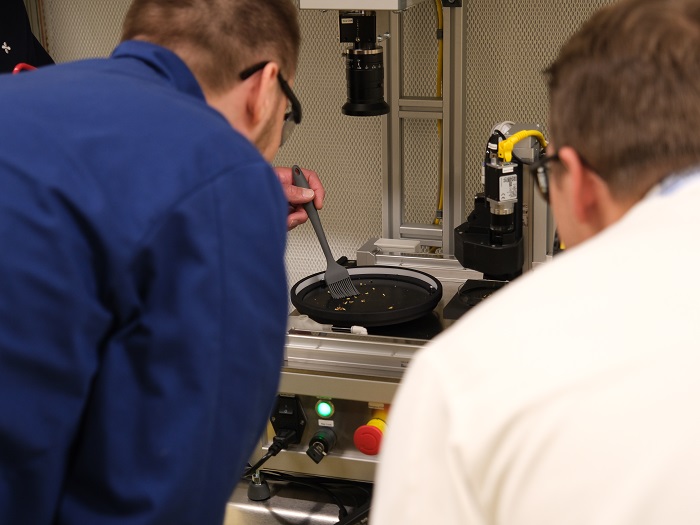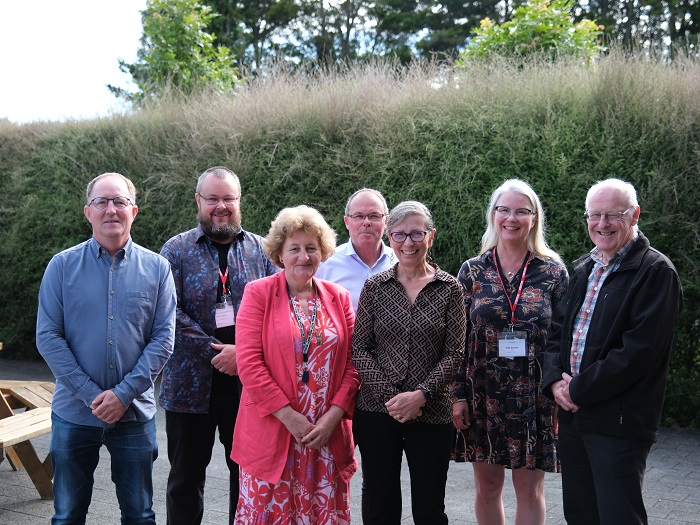Finnish robotics technology to support NZ forest research
Scion and Forest Growers Research (FGR) can now use robotics technology to improve forest tree propagation and breeding, following the signing of a formal partnership agreement with the Natural Resources Institute Finland (Luke) and South-Eastern Finland University of Applied Sciences (Xamk).
A robot jointly developed by Luke and Xamk at the latter’s Electronics 3K Factory uses AI and machine learning to sort somatic embryos (developed from non-reproductive cells), which enables faster and better selection of embryos for germination. The robot’s suitability for radiata pine somatic embryogenesis has been successfully tested. Somatic embryogenesis induces immature embryos to produce cell masses containing many tiny somatic embryos. These are encouraged to form mature embryos to develop into seedlings.
The agreement is part of a research programme funded by FGR – Tissue Culture Techniques for 21st Century Forests – that aims to scale up propagation and automate processes of somatic embryogenesis for radiata pine.
Scion New Value from a Digital Forest and Wood Sector portfolio leader Michael Watt says this international partnership shows what can be achieved when research and technology unite to resolve global forestry issues.

Upcoming research stages will concentrate on advancing the robot’s capabilities and developing a commercial system for sorting somatic embryos. Additionally, the partnership aims to explore opportunities for commercialising the processes of somatic embryogenesis.
Developing robotics through international cooperation supports sustainable forestry goals and improves forest management efficiency. Sharing knowledge about tree species and technology use may lead to important innovations also in other forestry areas.
The programme aims to expand and automate the use of somatic embryogenesis of radiata pine for the commercial forestry industry.
Scion is the science lead for the programme, which aims to create a reliable and cost-effective propagation method to boost productivity and ensure consistent results.
Sorting mature somatic embryos before germination is time-consuming and subjective, which prompted Scion and FGR to explore the Finnish robotics system. Luke and Xamk jointly developed a robot prototype and software to automatically pick mature somatic embryos for germination. It uses automated image capture using machine learning and artificial intelligence to determine if the embryo is likely to germinate or not.
The robot was initially programmed for use on Norway spruce and the tissue culture programme is exploring its suitability for radiata pine.
In September 2023, Scion staff, including scientist Jana Krajňáková, visited Luke and Xamk to explore if the machine could be used for radiata pine embryos. Successful trials led to FGR purchasing it in October 2023. In May 2024 the robot arrived at Scion with Xamk engineer Elmar Bernhardt, who assembled it. Scion also hosted Luke scientist Sakari Valimaki while he taught the Tissue Culture laboratory team how to work with the robot – and trained the robot on working with radiata pine.

The four parties are exploring integrating AI into the robot to achieve a working prototype for automated picking of radiata pine embryos. Commercialising the robot and expanding its use to other species is under preparation. They are also looking at the commercial potential of somatic embryogenesis for radiata pine.
Dr Paul Adams from FGR says the partnership is an example of the benefits of international collaboration and a cross-disciplinary approach, learning from each other, gaining different experiences with different species, and finding a more efficient way of making faster progress.
“The ability to apply the learnings across other important forestry species will be a gamechanger into the future.”
Jana says there has been significant interest in the robot from industry partners and the first germination experiments have been undertaken. “The robot aligns with one of the goals of the FGR tissue culture project – to streamline propagation to make it more cost effective and efficient. The propagation process is time-consuming and tiring and humans are not consistent.
“The robot’s algorithm uses the same criteria to select embryos around the clock.”
Having the machine also opens more commercial work opportunities and can increase efficiency. Dr Tuija Aronen and Dr Mikko Tikkinen from Luke say it is important to have experience using the robot with different species and the partnership will deepen the research collaboration with Scion and the New Zealand forestry industry.
The green tech robotics partnership with Scion and FGR represents a key milestone in the internationalisation of Xamk’s research, development and innovation activities within the forest bioeconomy sector.
“This technology promotes the green transition in an important research area for us,” says Xamk Electronics 3K Factory head Hannu Leinonen.
